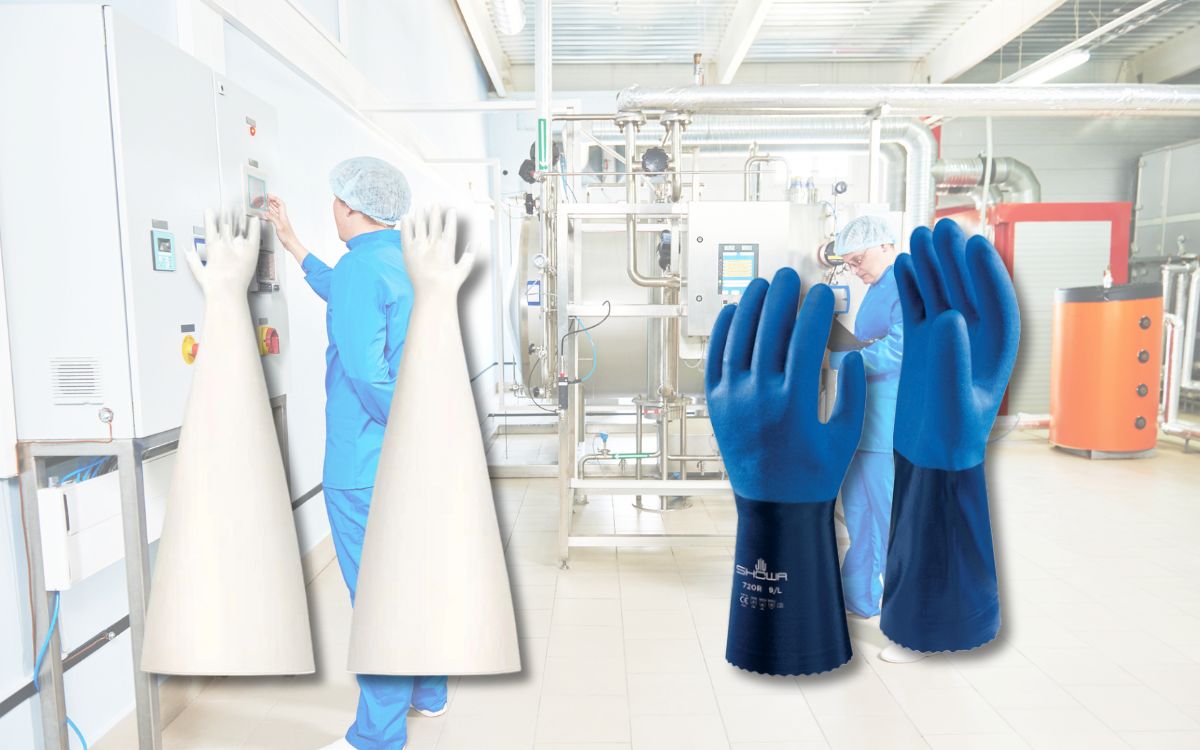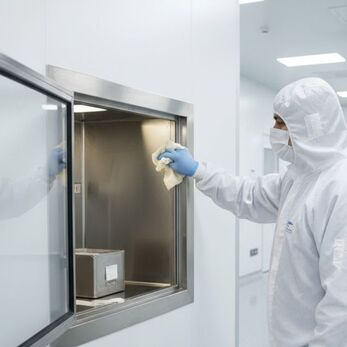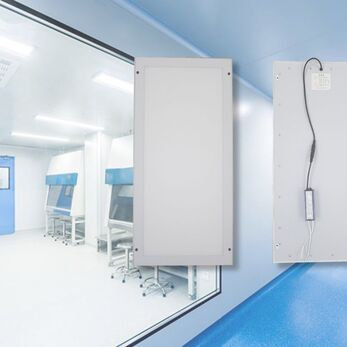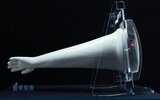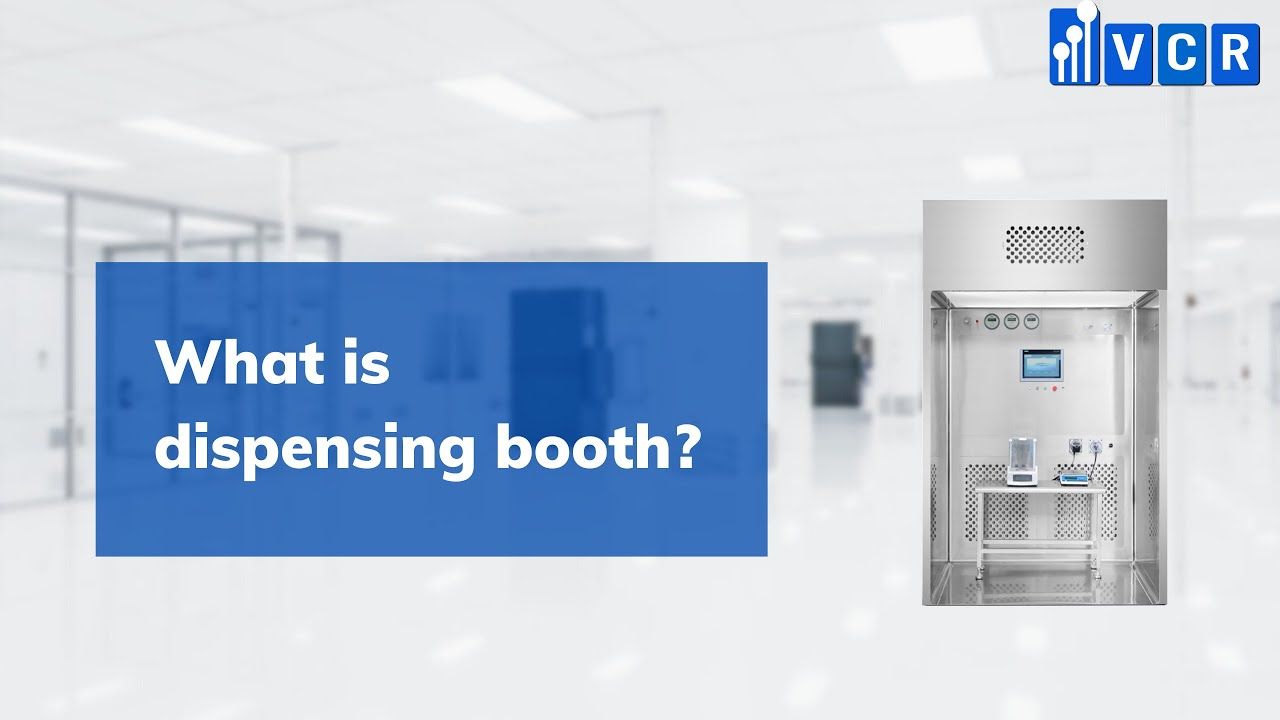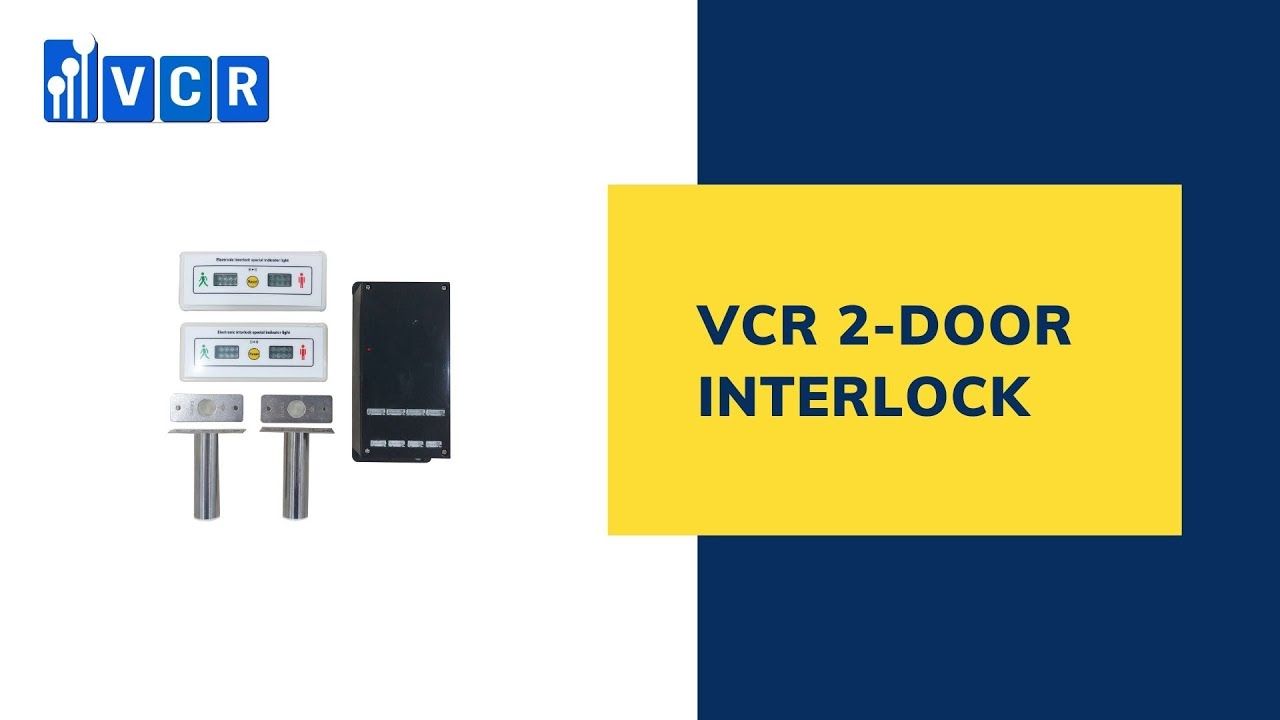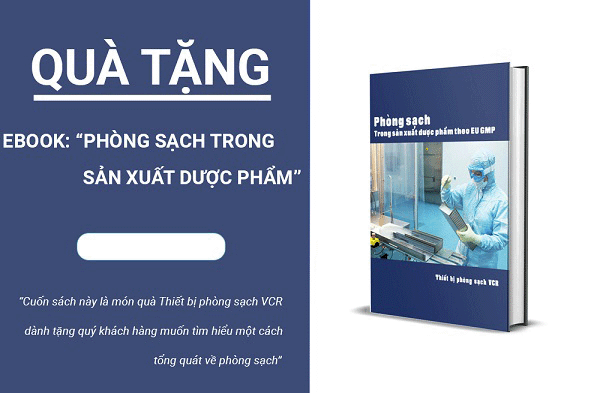CSM vs NBR Gloves Comparison: Which is Suitable for Pharmaceutical Manufacturing?
Comparing CSM and NBR gloves is an important step when choosing protective equipment for GMP-compliant pharmaceutical manufacturing environments. Each material has its own advantages and disadvantages in terms of durability, chemical resistance, cleanliness and suitability for each sterile area.
1. Comparing CSM and NBR Gloves: Which Type Is Suitable for Pharmaceutical Manufacturing?
In pharmaceutical production environments, selecting the right type of glove not only affects product quality but also directly relates to GMP compliance and operator safety. Among current glove materials, CSM (Chlorosulfonated Polyethylene) and NBR (Nitrile Butadiene Rubber) are two commonly used options due to their outstanding technical characteristics.
However, each type has distinct advantages and limitations, leading to different applications depending on the cleanroom zone. So, which is the optimal choice for a GMP-compliant pharmaceutical plant? This article provides a side-by-side comparison and practical guidance on glove selection tailored to each production area.
Quick comparison CSM and NBR Gloves for the Pharmaceutical Industry
|
Criteria |
CSM Gloves |
NBR Gloves |
|
Material |
Chlorosulfonated Polyethylene synthetic rubber |
Nitrile Butadiene Rubber synthetic rubber |
|
Chemical resistance |
Excellent, especially against strong acids and corrosive solvents |
Good, but less effective with strong acids and ketones |
|
Mechanical durability |
Very high - resistant to abrasion and punctures |
Good - sufficient for general tasks |
|
Flexibility |
Stiff, less suitable for precision tasks |
Very flexible, suitable for precise handling |
|
Comfort over long use |
May cause fatigue if worn continuously |
Comfortable, reduces fatigue during extended use |
|
Cost |
High - ideal for specialized environments |
Moderate - suitable for broad deployment |
|
Sterilization capability |
Withstands harsh conditions, heat, and chemicals |
Good, but sensitive to certain strong solvents |
|
GMP suitability |
Very high - for critical contamination control zones |
Common and practical for various GMP-compliant areas |
2. When to Choose CSM Gloves?
CSM gloves are not universally suitable for all areas of a pharmaceutical facility but are essential in high-risk environments. Ideal use cases include:

- Handling strong chemicals: When production lines involve concentrated acids, industrial solvents, or strong cleaning agents (e.g., peracetic acid, sodium hypochlorite), CSM gloves offer superior hand protection and chemical durability.
- Equipment cleaning - CIP processes: In Clean-In-Place systems, CSM withstands high temperatures and aggressive chemicals without hardening or cracking.
- Maintenance and technical zones: For tasks such as equipment disassembly or troubleshooting in confined spaces, CSM gloves offer excellent mechanical strength and puncture resistance.
- High-contamination-risk areas: In zones with hazardous substances or chemical particulates, CSM provides a long-lasting protective barrier for operators.
See more: What are CSM gloves? Advantages and applications in pharmaceutical cleanrooms
3. When to Choose NBR Gloves?
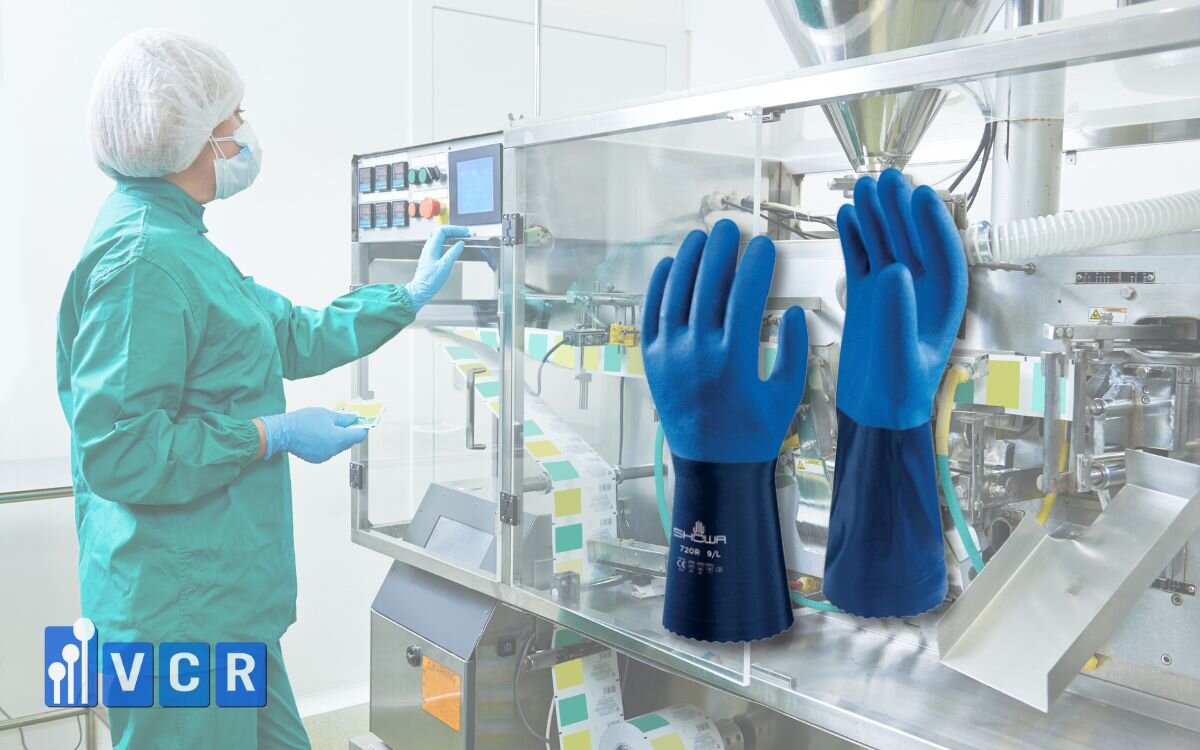
NBR (nitrile) gloves are widely used in the pharmaceutical sector thanks to their flexibility, comfort, and balanced cost-performance ratio. Use NBR gloves in the following scenarios:
- Direct product handling: In packaging, sampling, weighing, or QC processes, NBR gloves enhance dexterity and reduce fatigue during repetitive tasks.
- Precision-required operations: For pipetting, instrument adjustments, or fine sample handling, NBR offers tactile sensitivity and flexibility.
- High glove turnover areas: In zones where gloves are changed frequently (e.g., between production batches), NBR is cost-effective and easy to dispose of.
- High-cleanliness areas without harsh chemicals: NBR gloves meet cleanroom requirements (powder-free, antistatic) and are suitable for ISO Class 5-7 zones without strong chemical exposure.
4. Glove Selection Recommendations by GMP Application Zone
Glove material should align with the function of each cleanroom zone. Below are suggestions based on GMP-compliant best practices:
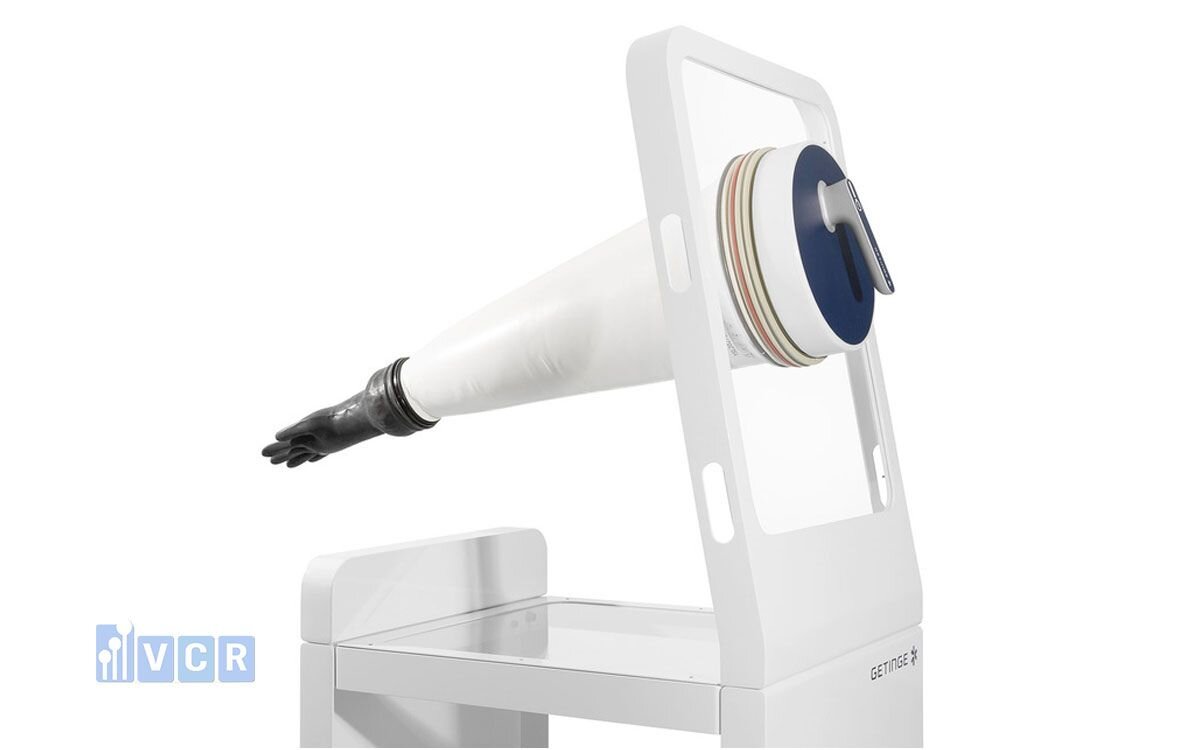
Sterile production areas
- Recommendation: Use powder-free, antistatic NBR gloves.
- Why: These gloves minimize particulate contamination and meet cleanroom ISO Class 5-7 requirements.
- Note: Prefer pre-sterilized (sterile nitrile) gloves.
Maintenance and cleaning (CIP, SIP)
- Recommendation: Use CSM gloves with high chemical and heat resistance.
- Why: These zones involve exposure to acids, cleaning agents, and humidity; CSM ensures durability and protection.
Packaging and QC labs
- Recommendation: Opt for soft, stretchable NBR gloves.
- Why: These gloves support precision work while maintaining comfort during long shifts.
5. Frequently Asked Questions
1. Can CSM gloves be used in cleanrooms?
Yes. CSM gloves are suitable for cleanroom environments, especially in support areas like maintenance, equipment cleaning, or chemical storage. However, due to their stiffness, they are less common in direct product handling zones.
2. Are NBR gloves GMP-compliant?
Yes, if they meet the following criteria:
- Powder-free
- Light chemical resistance
- Antistatic treatment
- Manufactured by ISO 13485-certified suppliers or equivalent
3. Which gloves should be used in gowning rooms?
NBR gloves are recommended for gowning zones because they are:
- Easy to put on and remove
- Comfortable for repeated use throughout the day
- Cost-effective for high-turnover areas
6. Glove Selection Support for GMP Pharmaceutical Plants
Choosing between CSM and NBR gloves depends on the specific functions and risk levels of each cleanroom zone. If you're still unsure which glove type best balances technical performance and cost:
Let the VCR cleanroom specialists support your team.
We offer free consultations based on your facility layout, GMP requirements, and usage frequency.
Hotline: 090.123.9008
Email: [email protected]
Website: https://vietnamcleanroom.com/
Diep VCR






